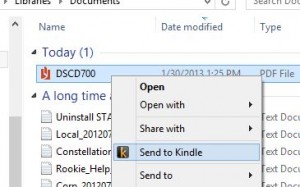When
switching from an iPhone to an Android phone,
it’s not only a change of brand but also a change of its entire
operating system. Switching operating systems may result in file and
format incompatibility.
This makes the transfer of private data such as Contacts, Mail and
Messages a tricky process as you need to convert the files to a format
that the Android operating system can read… or you can use Google
Contacts.
Today, we will guide you on how to
transfer iPhone contacts to Android phone using Google Contacts. You will first have to sync your contacts from your iPhone to Google contacts, then restore it to your new Android phone.
With these methods, there are no use of additional apps, and you don’t
require any format change when you transfer via Google Contacts.
Syncing Contacts
There are two ways to sync your contacts with Google Contacts, one with iTunes and the other with the iCloud.
1.1 Using iTunes
If you have a Google account and manually backup your iPhone to your computer using iTunes, here’s an easy way to export your iPhone contacts to your Google account.
First, open
iTunes and plug in your iPhone to your computer via USB cable. Select your iPhone in iTunes. Under the ‘Info’ tab, choose to
Sync Contacts with Google Contacts.
It will prompt you to enter your Gmail username and password. Wait for it to sync. Once it is done, head to
Gmail and log in to your account. Then go to
Gmail > Contacts.
You’ll find that your contacts will have been imported to your Google Contacts.
1.2 Using iCloud.com
If you back up your important data on your iPhone to iCloud, go to
iCloud.com and login to your iCloud account.
After that, click on
Contacts and you will see all of your iPhone contacts which have been backed up in iCloud.
Press
Ctrl +
A to select all contacts, click on the
Settings button on the bottom left, then select "Export vCard…".
Login to your Gmail and go to
Gmail > Contacts.
After that, click on ‘Import Contacts…’ and an alert will be prompted. Choose your exported vCard… file and click
Import to import all iPhone contacts to Google Contacts.
2. Merge Duplicate Google Contacts
Once you’ve imported iPhone contacts to Google Contacts, you can get
rid of duplicate contacts before restoring your contacts on your phone.
It is easier to do this on on your computer than on your smartphone.
Click on
More and then click on
Find & merge duplicates...
A page with the names of duplicated contacts will pop up. After going
through the names, select those that have duplicate contacts and click
Merge.
3. Restore Contacts on Android
Now that you have succesfully exported and merged duplicates of your
iPhone contacts to Google Contacts, you can begin to restore it to your
Android phone. On your Android phone go to
Menu > Settings > Accounts and Sync. Tap on
Add Account and choose
Google.
Then, tap on
Sign in and key in the Gmail account you used to
sync your contacts to.
Wait for a while. When communications to the Google Servers are
complete, you will arrive at a page to a page where you’re given options
on what you want to sync into your phone. Tick ‘Sync Contacts’ and tap
on
Finish.
With that, you’re done! To verify that you have successfully
transferred all of your contacts into your phone, check your contacts
book.
Wrap Up
Without Step 2, you will see repeated entries in your Contacts. You
can choose to merge them in your new phone or go back to doing it the
faster way on Google Contacts.
One great thing about using Google Contacts to sync your contacts is
that even if you lose your phone or switch to another smartphone,
you will never lose your contacts. They are kept save within your Google account.
Original post from hongkiat.com
How To Transfer And Sync Your iPhone Contacts With Android
 Don’t
like the idea that any and all of your Facebook friends can post
updates, links, photos, or just about anything else they want to your
timeline?
Don’t
like the idea that any and all of your Facebook friends can post
updates, links, photos, or just about anything else they want to your
timeline?







































